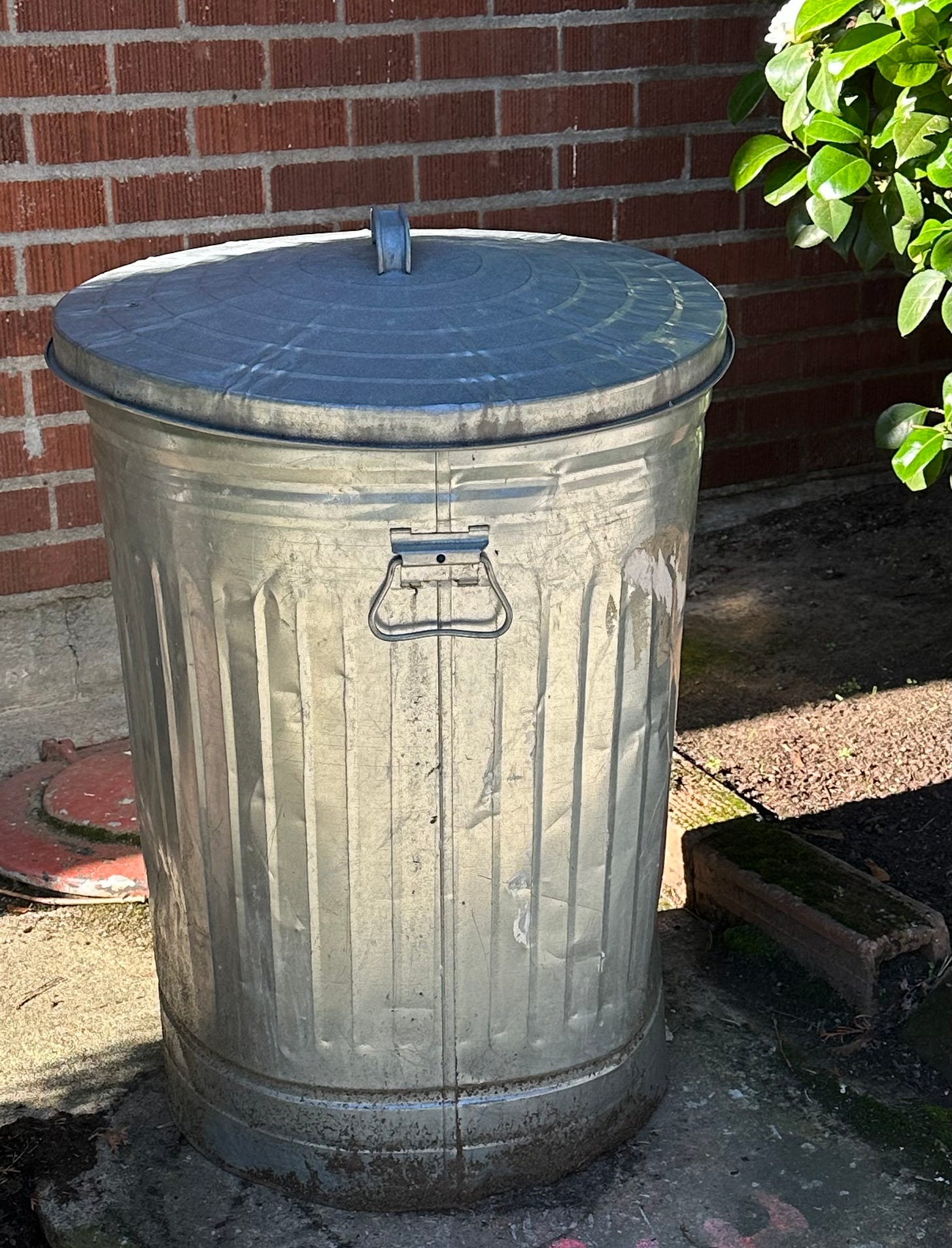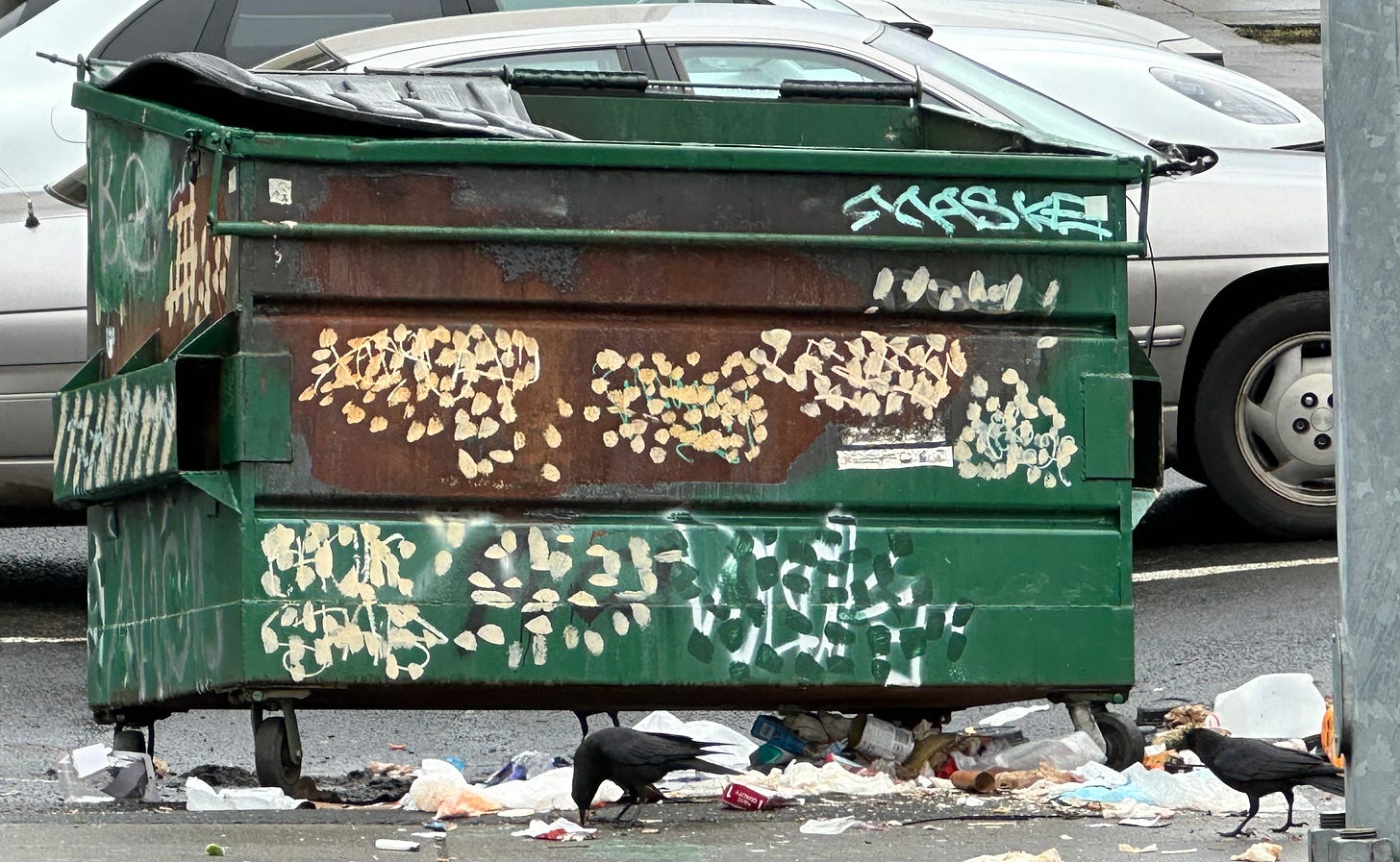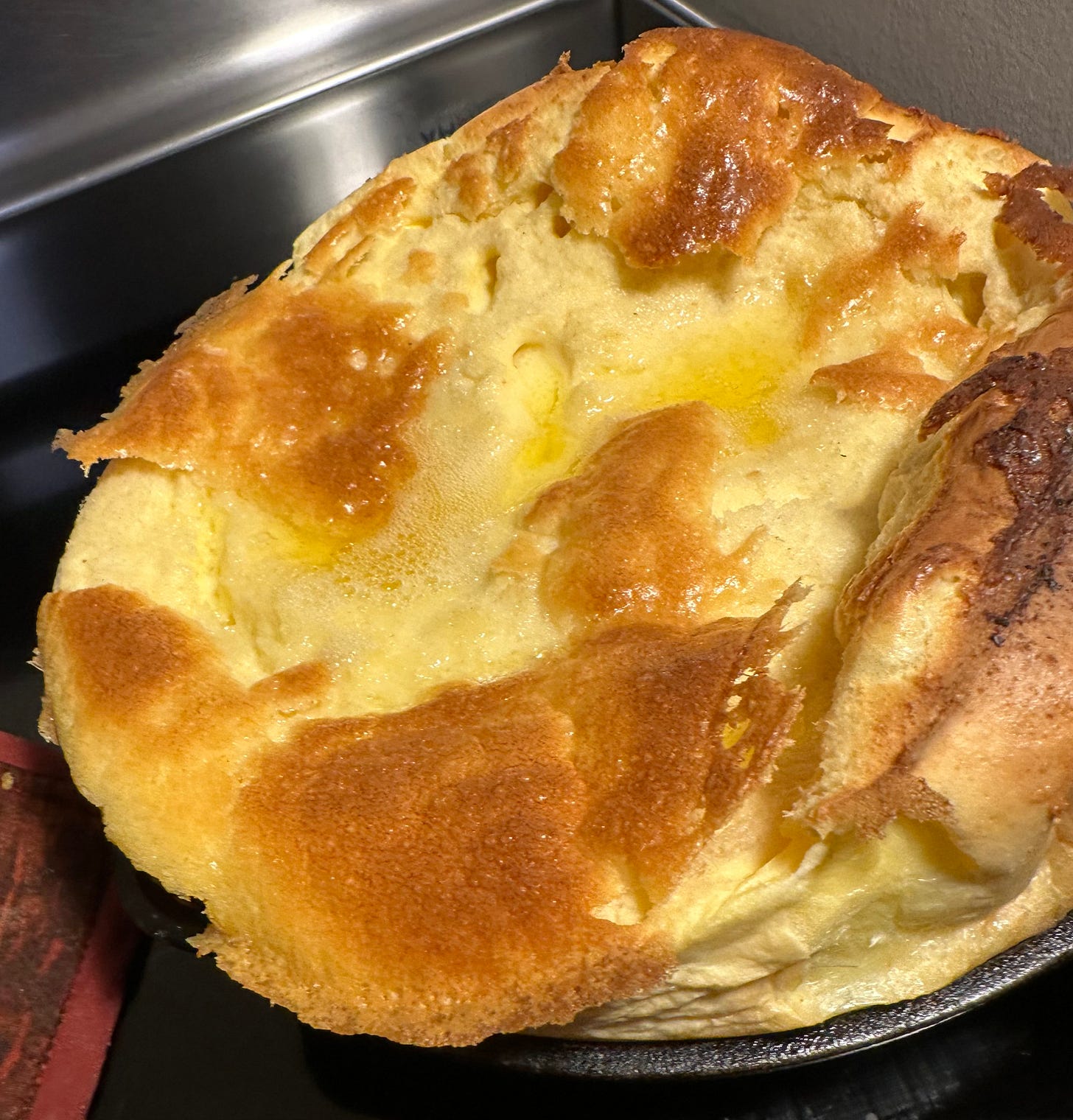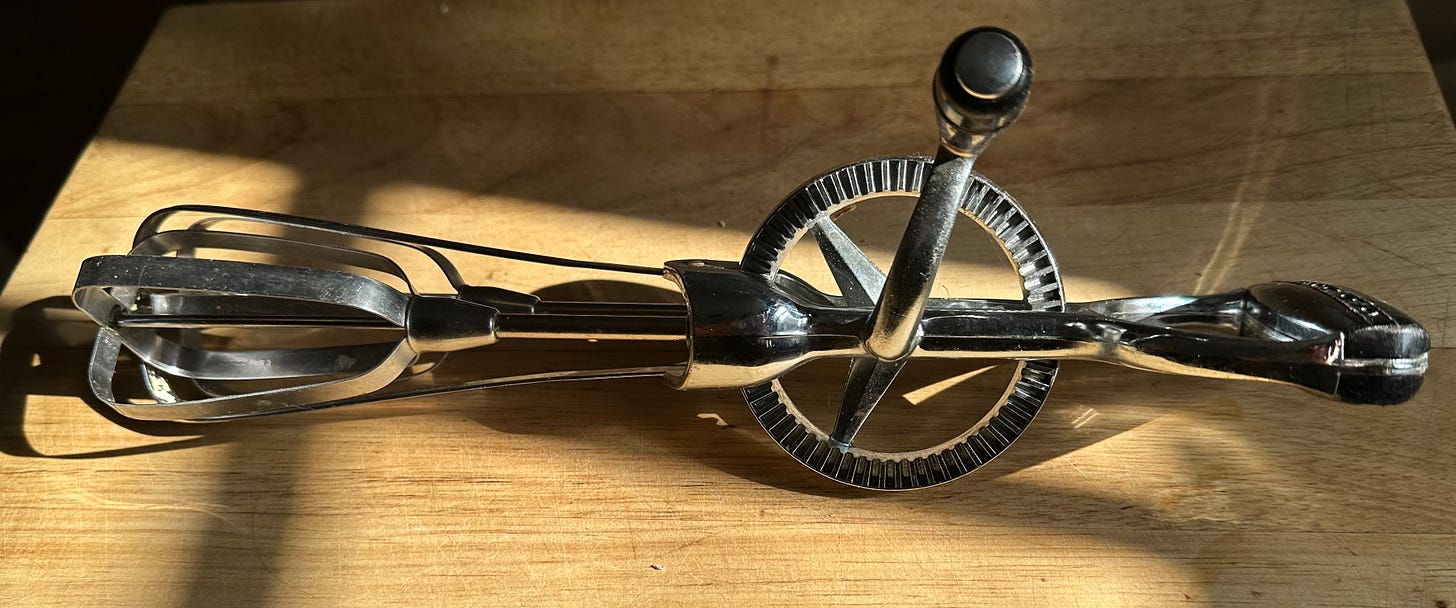Fun with Scots and garbage cans
Plus, a gluten-free version of the popular Dutch baby pancake
Check in
Power
What does power mean to you? You know, I hope, that you are powerful beyond measure.
We are all powerful, but so many of us don’t know it. Don’t feel it. But all we have to do is reach inside, and it is there, flowing like lava.
What is power good for? It is what underpins our daily actions. We use it to create, to understand and overcome. To be more fully human.
I’m not an evangelist or a cheerleader. I simply want to remind you that you are powerful. You have vast stores of strength and courage hidden along your bones.
Remember, on going to sleep, on waking, who you are. That you are a child of God, if you believe in a deity, or of the Universe if you understand that spiritual links bind all things. If you have no faith, it doesn’t affect your power. You have it regardless.
Touch your fingertips together. Can you feel the spark? You are alive. You are wired. You are powerful, more than you know.
Iconic images
I’m fascinated by garbage bins. In Portland, they are made of heavy-duty plastic and color-coded for trash (gray or black), recycling (bright blue) or compost (green). These photos are of trash bins but also include other objects I’m obsessed with, like shoes, graffiti, meters, blank walls and the shadows of trees.

One of the apartments in my neighborhood still provides its renters with old-fashioned tin garbage cans. I see a worker hefting them to his shoulder every week to tip into the hopper on his truck. He’s a small-scale hauler.

Dumpsters are another matter. In my city, they are often overburdened with graffiti. That and crows. The birds love the detritus sloppy people leave around Dumpsters.
Things right themselves
A little poem for the end of winter.
This is not nothing
Winter's still with us. The cat plays with the yarn, The bees sleep in the rosemary, Snow softens the fences. Look around, look around, Some beauty will catch you, Embrace you and bring you Away from your cares. My winter wish for you: Less cold, more candles. Walk briskly, look upward— Trace the clouds, the stars.
The 100DayProject is upon us
The 100DayProject starts tomorrow, Sunday, February 23. It’s a free art online project that takes place every year. The founder and guiding light of the movement is Lindsay Jean Thomson, and she has been busily posting ideas and resources and general cheerleading at the100dayproject.substack.com.
Choose your own project
Some participants will do the same sort of thing on each of the 100 days, say write a poem or make a sketch. I’ve tried that, with poetry, and it was too much. Poems come to me when they come, not when I bid them. I’ve had other fun ideas, like making a batch of cookies every day, each from a different recipe, but that might be impractical.
So instead, I’m just going to mindfully create something every day, not necessarily in the same genre. Some days a photo, some days a poem. A quilt block. An Irish jig played on the violin. A set of three words like the triad below. The key is “mindfully.” A little created thing that is special to the day.
Find my prompts
I am a part of the celebration this year. Lindsay Jean has asked me to write a week-long series of prompts, to run in mid-April. The theme is noticing, or paying attention. I’ve already written them, and I think they are powerful.
Meanwhile, I intend to celebrate each day with a little creation. Perhaps you will join me and tens of thousands of other participants in a meaningful project that grows bigger each year.
Triad
Having fun with three related words;
Scotch
Scot
Scottish
Scotch
Purists never employ this word to describe residents or natives of Scotland or the dialect they speak. It’s an adjective used for objects like Scotch tape, Scotch broth, Scotch pine or Scotch, the whisky. One precept drilled into my copy editor mind at The Oregonian was that the Scotch—no, wait, Scottish—liquor is “whisky” and the American version is “whiskey.”
The verb “scotch” means to put an end to something. It also has an older meaning of using a wedge to stop a wheel from moving. As a noun, a scotch is a skin cut or scar, and the verb means to inflict the wound. That’s the meaning of “scotch” in this line from Macbeth: “We have scotch’d the snake, not kill’d it . . .”
Scot
A Scot is someone from Scotland. Scots is the English dialect spoken by Scots.
Scottish
Scottish is the adjective that describes things having to do with Scotland: Scottish books with Scottish characters in Scottish settings.
Schottische
I’m throwing in this fourth word because it’s so cute. A schottische is a dance, a slow polka. It’s pronounced “shot-ish.” The word comes from from the German for “Scottish dance.”
Scots ancestry
I think my mother’s gorgeous auburn hair was from the Scots-Irish side of her family. Red hair is a recessive gene, but enough Scots have it that one in eight of them is red-haired. The proportion in Ireland is one in ten.
Famous Scots
• Walter Scott, novelist • Robert the Bruce, warrior • Robert Burns, poet • David Hume, economist-philosopher • Alexander Graham Bell, phone guy • Alexander Fleming, penicillin • William Wallace, warrior • James Watt, steam engines • J.K. Rowling, novelist and billionaire • Charles Macintosh, inventor of a coat • James Clerk Maxwell, precursor of quantum physics • Adam Smith, economist-philosopher • Arthur Conan Doyle, M.D. and writer • Thomas Carlyle, philosopher and satyrical essayist. Try pronouncing his name with the accent on the second syllable instead of the first. It sounds so deliciously upper-crust. • Dorothy Dunnett, historical fiction writer without equal • James Boswell, biographer • Robert Louis Stevenson, storyteller • Andrew Carnegie, steelmaker and philanthropist. Some folks put the accent on the second syllable: CarNEGie. • Kenneth Grahame, The Wind in the Willows • David Livingstone, I presume • John McAdam, builder of roads • Entertainers including Sean Connery, Ewan McGregor, Robbie Coltrane, Donovan and Annie Lennox • William Forsyth, for whom forsythia is named • Nessie
Famous Scotts
• Scott Joplin, composer • Scott Turow, legal thriller writer • Scott Carpenter, astronaut • Montgomery Scott, ”Star Trek” astronaut: Beam me up. • George C. Scott, actor • Willard Scott, TV weatherman and clown • A.O. Scott, film reviewer for The New York Times
Dutch baby
Comfort food is winter’s gift, and nothing is more comfortable than a fat, fluffy, puffy Dutch baby. This continental-style pancake is disarmingly easy to make, and it stops the show every time. In our house, we usually have it for dinner.
I’ve been a Dutch baby fan since I found a recipe for it in the January 1977 edition of Sunset magazine.
This spectacular-looking breakfast treat is amazingly easy to make. You need a wide pan that can take a lot of heat. Cast-iron is best. I use an 8-inch skillet.
Easy recipe
My toaster oven is big enough even for the full-size pancake in the 8-inch pan. Whichever oven you use, heat it to 425 F. with the heavy pan in it.
Meanwhile, beat together
• 3 eggs • 3/4 cup flour • 3/4 cup milk • A dash of salt
When you’re ready, toss 1/4 cup (half a stick) of butter into the hot pan and let it melt. Carefully pour in the egg mixture. Bake about 20 minutes, until the pancake is puffy and the edges browned. Have everyone at the table ready to admire the puffiness before it deflates.
Note: If the pancake doesn’t creep up the sides of the pan, the pan wasn’t hot enough when you added the batter. It’s somewhat of a juggling act to get the pan hot enough without over-browning the butter. Even if the pancake doesn’t rise, however, it will still be delicious.
Beaters
One photo in the Sunset article showed cooks using an old-fashioned rotary egg beater, the kind you crank, to blend the batter. I remember using one way back when. Today, I use a food processor or an immersion blender. Even a wire whisk works, provided you beat the batter enough to incorporate a lot of air.
Toppings
In December 2024, The New York Times ran a Dutch Baby recipe that calls for three eggs with 1/2 cup each of flour and milk. I haven’t tried it because the Sunset recipe works, so why experiment?
Florence Fabricant, author of the NYT article, listed ideas for topping the finished pancake:
It’s wonderful simply with sugar, syrup or preserves, but you also can serve it with fresh berries and whipped cream, apple slices cooked in butter and sugar, or banana slices lightly cooked then dusted with brown sugar.
She does not mention the iconic topping from the Sunset article, powdered sugar and squeezed-over lemon juice.
Make it smaller
When I was living alone in assisted living, I developed a single-serving Dutch baby that I could cook in a toaster oven in a 6-inch cast-iron pan. Just use 1/3 of each ingredient: 1 egg, 1/4 cup each of milk and flour, and about 1 tablespoon of butter.
Make it gluten-free
A few weeks ago, I developed a gluten-free Dutch baby that Robert and I think is the best-tasting ever. For the 3/4 cup flour, substitute 1/4 cup almond flour and 1/2 cup tapioca flour.
Check out
Orange object
While I was riding a bus out of downtown Portland, I saw a long orange sleeping bag on the steps of an abandoned bank building. The windows were too dirty for me to take a photo, so instead I wrote a poem.
Sleeping bag
Bright orange, a warm color. Quilted and long, maybe high-rated For cold winter nights. Daylight arises on a business long closed, Where the bag is stretched out on the steps. An orange caterpillar unfurled. Who is inside there? A child or a grownup? The bag is a long one, so somebody big. Bones on the pavement, how does that feel? No dog, no backpack, just the lone orange bag. Someone who’s sleeping as people walk by. No face, no feet showing, wrapped up in comfort . . . Comfort? Oh, comfort? It’s 30 outside!
I’m in The Oregonian
An article I wrote about the secret code in Portland’s street addresses appeared a few weeks ago on OregonLive, the online presence of The Oregonian newspaper. On Sunday, February 16, it appeared in The Sunday Oregonian as well.
The origin of the story was a posting on Becoming called “Ghost Streets.” It’s one of my favorites.
—30—
Until next week
If you enjoyed this post, click on ♡ to let me know.
Every time someone likes a post, I get an email notification; that gives me a chance to remember and cherish that individual.
I welcome comments and wish there were more of them. They are not hard to write. Please leave one. I am notified when you comment, so I will be sure to see it.
If you think others would like this newsletter, hit re-stack (the interlocking arrows at the top of this item) or share.
Please consider supporting my writing financially. You can subscribe to Becoming for free and read everything I write. As the saying goes, why keep a cow when you can buy milk? Still, I’m suggesting you invest in the cow. You can do that for less than $1 a week.
Also, on PayPal, you can tip me in $5 increments.






You had me at "phone guy." Thanks for another great piece of writing.
Really cool